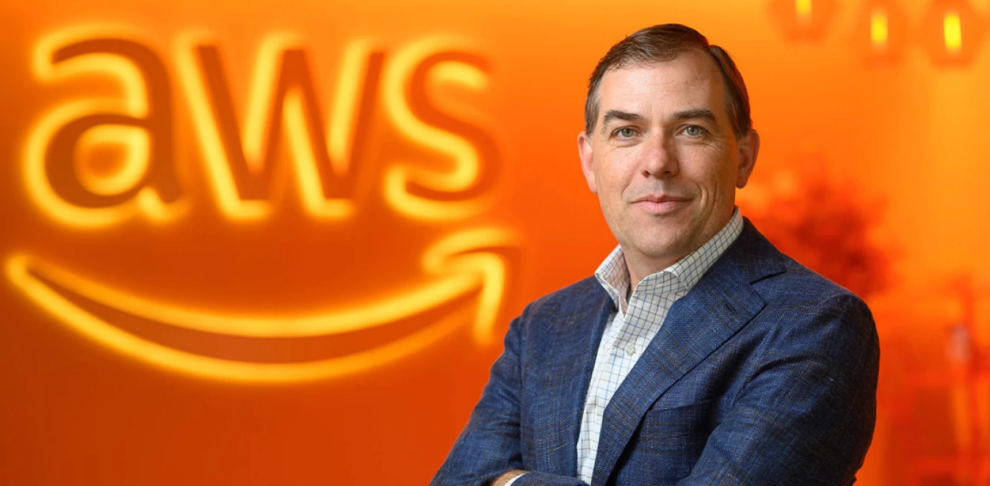The appointment of Matt Garman as the CEO of AWS marked a significant moment in the cloud giant’s journey. A long-time Amazon veteran, Garman joined the company as an intern in 2005 and played a pivotal role in the development of early AWS products. Now, he’s at the helm, steering AWS through a period of unprecedented change and opportunity, with generative AI emerging as a major driving force in the tech industry.
Garman’s vision for AWS centers around several key areas: embracing and democratizing generative AI, fostering a strong relationship with the open source community, and making strategic decisions about service closures to optimize resources and customer experience.
Generative AI: A “Huge Tailwind” for AWS
Garman recognizes the transformative potential of generative AI, describing it as a “huge tailwind” for AWS. This technology, which enables machines to create new content like text, images, and code, is poised to revolutionize various industries and applications.
AWS is actively investing in generative AI, with initiatives like Bedrock, a managed service that provides access to foundation models for developing AI applications. This allows customers to tap into the power of AI without having to build and manage their own complex infrastructure.
However, AWS faces stiff competition from Microsoft Azure and Google Cloud, both of which are heavily investing in generative AI. Garman emphasizes AWS’s commitment to providing a secure and comprehensive platform for businesses to build and deploy AI solutions. He highlights that AWS prioritizes security and enterprise-grade capabilities from the ground up, ensuring that customers can trust the platform with their sensitive data.
Interestingly, Garman believes that the rise of generative AI will fundamentally change software development. He predicts that within a few years, “most developers [will] not [be] coding” in the traditional sense. Instead, they will focus on higher-level tasks like innovation and user experience, leveraging AI tools to automate coding tasks. This shift underscores the importance of adapting to the changing demands of the tech industry and acquiring new skills.
Open Source: A Collaborative Approach
AWS has a complex relationship with the open source community. While the company relies heavily on open source software, it has also faced criticism for allegedly exploiting open source projects for its own commercial gain.
Garman aims to foster a more collaborative and mutually beneficial relationship with the open source community. He emphasizes AWS’s commitment to both leveraging and contributing to open source. He believes that open source thrives on community involvement and that AWS is dedicated to playing an active and responsible role in this ecosystem.
AWS has taken steps to demonstrate its commitment to open source, such as releasing its own open source projects and contributing to existing ones. However, the company still faces challenges in balancing its business interests with the principles of open source. Garman’s leadership will be crucial in navigating this delicate balance and building trust with the open source community.
Closing Services: A Strategic Imperative
While AWS is known for its vast array of cloud services, it occasionally makes the difficult decision to close down certain services. This might seem counterintuitive, but Garman explains that it’s a strategic move to optimize resources and focus on services that deliver the most value to customers.
Service closures are not taken lightly and are based on careful consideration of various factors, including customer usage, technological advancements, and market trends. By discontinuing underperforming or outdated services, AWS can allocate its resources more effectively and invest in developing new and innovative offerings.
Garman acknowledges that service closures can be disruptive for customers, and AWS strives to provide ample notice and support to help them transition to alternative solutions. Ultimately, the goal is to ensure that customers have access to the best possible cloud services to meet their evolving needs.
Investing in the Future: Startups and In-Person Work
Beyond generative AI, open source, and service closures, Garman is also focused on other key areas that will shape the future of AWS.
- Startup Engagement: AWS is actively investing in startups, recognizing their potential to drive innovation and disrupt industries. Garman sees startups as a valuable source of feedback and a testing ground for new technologies. AWS provides support to startups through programs like its accelerator program, which offers funding, mentorship, and access to AWS resources.
- Value of In-Person Work: While remote work has become more prevalent, Garman believes that in-person collaboration is still crucial for fostering creativity and innovation. He encourages AWS employees to return to the office, emphasizing the benefits of face-to-face interactions and team building.
Conclusion: Navigating the Cloud Frontier
Matt Garman’s leadership comes at a pivotal time for AWS. The cloud computing landscape is evolving rapidly, with generative AI, open source, and increasing competition shaping the future of the industry. Garman’s vision for AWS centers around embracing these changes while maintaining the company’s core values of customer obsession, innovation, and long-term thinking.
His focus on democratizing generative AI, fostering a strong relationship with the open source community, and making strategic decisions about service closures demonstrates his commitment to navigating the complexities of the cloud frontier and ensuring AWS remains the leader in the cloud computing era.










Add Comment